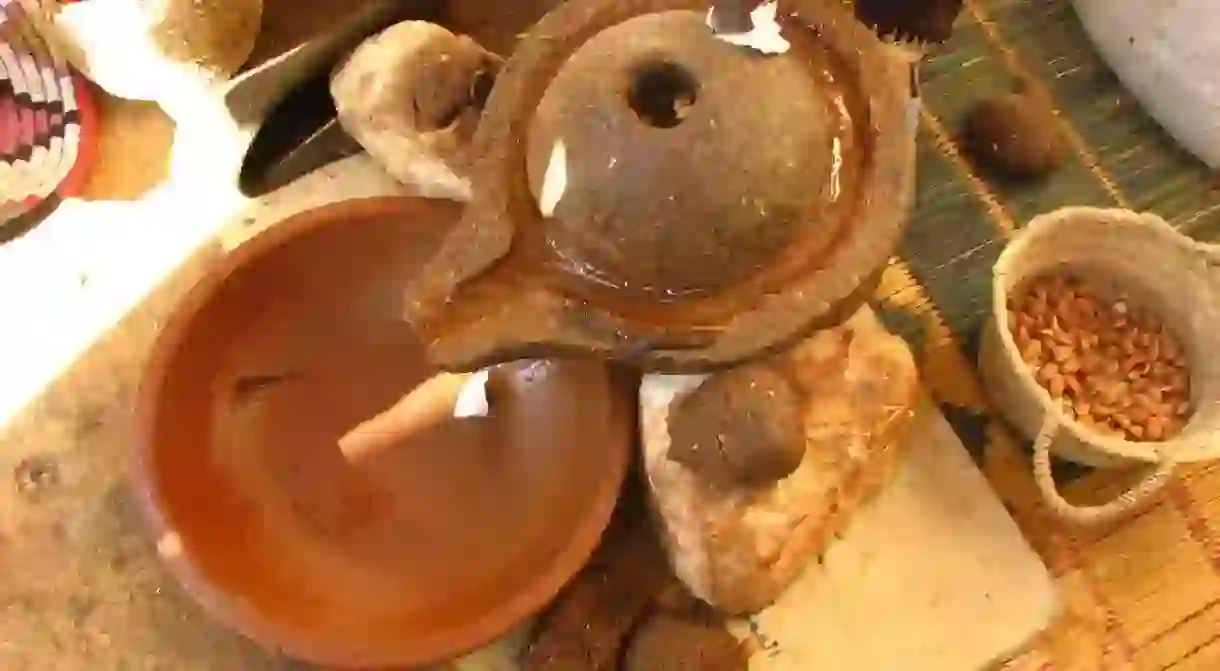A Brief History Of Moroccan Argan Oil

Used by the local Amazigh people of Morocco for its healing properties in reducing the look of scars and rheumatic problems, argan oil today is one of the hottest beauty products on the market. On the culinary scene, the nutty oil appears on menus in the hippest restaurants around the world. With 30 kilograms of nuts required to produce one kilogram of oil, the price tag associated is often quite steep if buying pure, quality oils.
The fruit, a treat for the goats that roam the region and climb the straggly trees, was previously only compressed after the fruit passed through the goat’s digestive system and collected from its dung. Today, the process is much more hygienic, with technology streamlining the process from the time the fruit is collected.
Nevertheless, so-called argan cooperatives exist throughout the medina and line the route leading to Essaouira, where women grind the fruit by hand to produce the oil before travelers’ eyes. But those in the know understand that Sidi Yassine (just outside of Essaouira) produces the best argan oil, as the highest standards are used to produce the finest cosmetic and culinary oils.
Despite attempts to export and grow the argan tree to and in other areas worldwide, the region surrounding Essaouira and Agadir is the only place in the world the argania spinosa grows. Given its ability to survive the region’s hot climate with temperatures that climb to +50 ºC, the tree produces a fruit that is harvested each spring and cold-pressed to create the oil.

With its smooth nutty taste, the culinary version is perfect for cooking or dipping and research has shown that it is effective in cholesterol reduction. But it’s also one of the main ingredients in locally blended amlou, a nut butter blended together with argan oil, honey, and almonds, all of which grow locally.













